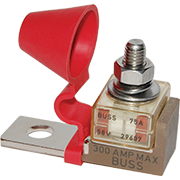Sabre602
Senior Member
- Joined
- Oct 19, 2017
- Messages
- 442
- Location
- United States
- Vessel Name
- Kingfisher
- Vessel Make
- 37' converted gillnetter/crabber
"have their own fusible link"
Do you carry on board replacements , should a problem arise?
Class T fuses are rated for most wire amperage used on boats , and replacements are easily stored and installed.
Excellent point. Added to my punch list for bringing this old girl into full readiness.


